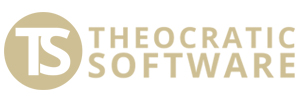Using with Custom Reports
The journal information can be printed using custom report scripting. You will need to do a LOOP of the Journal table. Then you can use any of the fields as required within the loop:
|
JournalID |
Unique database record ID (used internally by the software). |
|
JournalCongregation |
Congregation associated with the journal entry. |
|
JournalDateCreate |
Timestamp when the journal entry was created. See JournalDateEdit for details about field formatting. |
|
JournalDateEdit |
Timestamp when the journal entry was last edited. You can use the existing date formatting parameters for this field. However, there are 3 more formatting parameters that you can use to represent the time portion of the timestamp:
The # character can still be used with these format specifiers to remove leading zeros (see the Date Formatting Parameters help topic for full details). Also, they must be entered using the correct case! For example, %m (lowercase M) represents the month. |
|
JournalEntry |
Journal entry details (up to 255 characters) |
|
JournalFlag |
This is the Set as Important flag |
|
JournalDateCalendar |
The schedule date in the Away/Home Talks calendar, on which this journal entry will show as a tooltip. |
|
JournalCalendarFlag |
Flag set to -1 to identify journal entries associated with the talk schedules. Otherwise, the flag is set to 0 (zero). |
There are a couple of sample report scripts that have been included with the software to show how you might represent the journal data. They are called Journal 01 and Journal 02 and are available from your computers Start menu under the Public Talks\Sample Scripts\Management & Planning menu.
 With respects to scripting, note that looping through Congregations will not find journal entries for (None). See the sample script Journal 02 for more details.
With respects to scripting, note that looping through Congregations will not find journal entries for (None). See the sample script Journal 02 for more details.
Please click here if you would like to find out how to import sample scripts.
